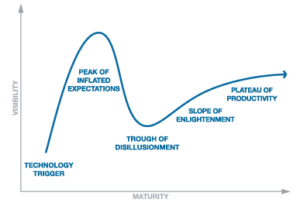I got an invitation to an online survey from BC Hydro to enable them to make their promotional emails more effective. I had a chance to reflect on my experience and write about my take on the issue at large.
BC Hydro distributes fiscal incentives for Residential, Business, Builders and Developers, Local Government and Electric Vehicles in BC. The rebates have conditions attached to them, failing to meet them voids your claim to the incentive. The basic strategy is – if the user is going to do that initiative anyway – why to pay him/her any incentive. In other words, you are not qualified recipient for the incentive if the work has already been initiated or done. From many people’s perspective, you are penalized for being proactive. It is important to level the playing field.
My formative years after the university was spent at Oslo Energi Enoek (Oslo Energy Efficiency) in Oslo, Norway. OEE, as we called it and were known by, would dispense fiscal incentives to users (Residential, Commercial, Industrial and Institutional) for energy efficiency incentives executed in their buildings.
It was a rebate program with preset rebates set based on making the initiative affordable. The baseline was if the incentive was costly, the incentives brought the payback time to 7 years. The initiatives are expensive when compared to conventional still valid methods. The gap is usually quite large which only piques interest from early adopters – which constitute less than 1% of the population.
Gartner Hype Cycle methodology gives a view of how a technology or application will evolve over time. This is what Norway’s energy commission recognized (before this cycle was composed) and made the pool of early adopters a larger one. This enables the pioneering innovative manufactures to expedite the technology delivery and lower the prices for the masses to adopt. Once the prices are lowered, the fiscal incentive is not required. Just education that the new technology is actually cheaper than the conventional would be adequate. By the time, the retail outlets have already stocked the new technology and marginalized the old one. For example, there is no point giving fiscal incentives on LED lights when they are only marginally more expensive than incandescent.
Consistency is the key to instil trust and participation from the public. It is important this aspect be recognized. If the initiative has been implemented in the time frame, regardless of the date of application, the user may be eligible for the incentive. A satisfied user who already did the right thing has a more chance of spreading the word to others about the incentive. A satisfied user will do more positive PR. On the other hand, the client who thinks of being treated unfairly will be dismissive and will not participate at all. The time period given to update ones house’s appliances is silly. A $100 rebate will not prompt the user to go and replace the old appliance. You apply for incentives if you are lucky to be replacing them in that time period the promotion is on. In other words, this incentive does not alter the choice or the behaviour of the consumer. I personally got this rebate (total about $450), but a friend did not as he was 10 days late.
I think bringing consistent preset rebates to the program will bring more change. It is important to reward the early adopters and gain all the hidden benefits to it.
The main take away from this is – there is no point reinventing the wheel. Europe has done what we are doing 15 years ago with a higher success rate. Collaboration with them can give us all the benefit of implementing an effective program. Getting help can be as straight forward as getting the foreign department to physically someone over and impart their knowledge and experience to the team – thus fast-forwarding success by a decade.

Recent Comments